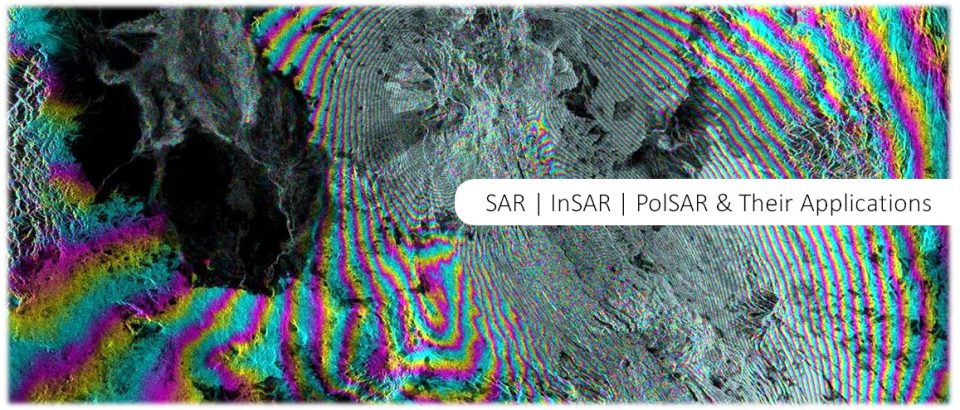 Radar Remote Sensing touches a lot of interesting subjects in the Geosciences. Hence, there is almost an unlimited range of topics that you can choose from when deciding on your term project. Here some recommendations that may help you select the perfect topic for you:
Radar Remote Sensing touches a lot of interesting subjects in the Geosciences. Hence, there is almost an unlimited range of topics that you can choose from when deciding on your term project. Here some recommendations that may help you select the perfect topic for you:
- Pick a project that you care about: Term projects are much more fun and a much more effective if you care about the site and subject at hand. Hence, pick a topic that is close to your heart. This is easiest achieved if your term project is related to your thesis research. Alternatively, you might also want to analyze if that oil well in your parents’ back yard has caused surface deformation or if you can map the flood progression of last year’s flooding in your home state.
- Don’t aim to high: Consider that the semester is only 14 weeks long when you stake out your project goals. Talk to me if you are in doubt about the scope of your project.
- Don’t stray too far: While you are encouraged to think and work interdisciplinary, don’t loose sight of the main focus of your work, which should squarely rest on Microwave Remote Sensing.
- Consider working in groups: If you want to achieve something that may result in a peer-reviewed science article, consider working in groups. Group work typically enhances learning and let’s you dive deeper into a subject by dividing the work. If you decide to work in groups, make sure that each group member has a distinct topic that contributes to the overall project goal.
Project Idea Examples:
Use InSAR to Hunt for Anthropogenic Surface Deformation Sources
This term project candidate would give you the chance to make a real contribution to an existing and exciting science project. It uses InSAR data from spaceborne SAR sensors to document ground deformation across North America caused by human activities. It was initiated by Matt Pritchard and Rowena Lohman at Cornell, and has been growing from there ever since. The current status of this project is shown in the map below, which shows identified deformation sources for the time span of 1992-2015. While lots of signals were already identified, it is important to understand that the compilation in the map is not yet complete in terms of spatial or temporal coverage, nor is it uniform in quality over the region.
Currently the database includes over 220 different areas of likely anthropogenic ground deformation, the majority of which are related to groundwater extraction (66%), with additional sources from geothermal activity (8%), hydrocarbon production (13%), mining (11%), and other sources (2%) such as lake level changes. In a few areas, the source of deformation is not yet determined.
If you are interested, you could target some of the many empty areas on this map and try to help fill in gaps. Alternatively, you could look at one or two existing signals and analyze potential temporal variations of the signal. Your results would be added to this living data base and might end up in a publication with your name on it.
The University of Alaska Fairbanks is an AA/EO employer and educational institution and prohibits illegal discrimination against any individual: Learn more about UA’s notice of nondiscrimination.
